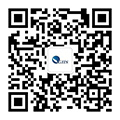历史表明,世界秩序的建立、混乱或重塑往往源于危机所引发的动荡局势,这些危机通常出现在新兴力量崛起与既有力量抵抗的背景下。近日,我院领军学者李形教授在《南华早报》发表了题《As the rules-based order declines, hegemony takes on a new form》的文章。
文章对世界秩序的走向做出分析,世界的主导权(hegemony)将从美国主导的和西方领导的主导权转向“相互交织的主导权”,即新兴大国的崛起和现行大国在互相竞争中塑造世界“交织主导型秩序” (intertwined hegemony)。
As the rules-based order declines, hegemony takes on a new form
From new development models to shifting norms, global power is now increasingly shared and contested across different regions and actors
History shows that world orders, disorders or new orders often result from the disturbing dynamics unleashed by crises amid the rise of new powers and the resistance of existing powers. Current dynamics can be understood by analysing how the world order is transitioning from a state of hegemony to one of “intertwined hegemony”.
Hegemony is a concept that was employed by Italian Marxist theorist Antonio Gramsci and is applied in international relations to describe the enduring aspects of an existing order maintained by a leading actor through a skilful combination of coercive and noncoercive power.
Hegemony is often associated with the United States, which has served as the primary hegemon shaping the post-war order. US hegemony has been exerted through its economic and military power, as well as through international institutions used as tools to uphold global norms, trade and security structures.
However, since September 11 and 2008 global financial crisis, the world order has undergone multiple crises and pivotal moments, such as China’s rise, the US-China rivalry, the global power rebalance caused by Covid-19, the US withdrawal from Afghanistan, the Russia-Ukraine war, China’s increasing role in the Middle East, Israel’s latest assault in Palestine and Donald Trump’s second term.
These crises and pivotal moments have exposed vulnerabilities in the existing world order and challenged the hegemony of Western-led institutions and norms.
The existing world order is facing crises across four key domains. Multilateral cooperation is increasingly elusive due to great power rivalries and interstate conflicts, highlighting a crisis of functionality as global institutions struggle to build consensus on critical issues, such as climate change, pandemics and cybersecurity.
The US-led “rules-based” global governance architecture has shown its inability to effectively address worldwide challenges, reflecting a crisis of scope. The failure to deliver a secure and equitable global system underscores a crisis of legitimacy. Finally, shifting power dynamics between emerging and established powers signifies a crisis of authority.
In this context, intertwined hegemony is a better way to describe the transition from the current world order to an emerging one. Intertwined hegemony reflects a process defined by mutual challenges, constraints, dependencies and accommodation between existing and emerging powers. Defenders and challengers of the existing order are deeply intertwined, engaging in a continuous process of shaping and reshaping the global order.
Firstly, intertwined hegemony indicates that globalisation is steering the world economy towards an era of multiple development models characterised by the coexistence of multiple competing economic systems and modes of governance. Global economic players now include not only private entities but also states, exemplified by Chinese state-owned enterprises.
The Chinese development model, often referred to as the Beijing Consensus – understood as regulated state-market-society relations – stands in contrast to the US-led Washington Consensus defined by liberal economic policies. Non-state entities like transnational corporations, tech giants and social movements also play an outsize role in shaping the world order.
Secondly, intertwined hegemony reflects a shift towards a post-hegemonic world, where no single power, like the US or the West more broadly, unilaterally shapes global norms or leadership. Decentralised platforms, internet connections, the digital economy and tech competition have eroded traditional monopolies on discourse, narratives and soft power.
Global norms are becoming more flexible and less universal, while alliances increasingly form around specific challenges and interests rather than shared ideologies. In this posthegemonic era, no single power can enforce global order, raising the risk of regional conflicts and great power rivalries.
Thirdly, intertwined hegemony emphasises the diverse perspectives on mechanisms, policies and strategies that drive national development and growth. Today, emerging powers have the capacity to formulate collective positioning strategies and balancing tactics in the global arena.
For example, the expansion of Brics promotes a more inclusive model of global governance that values cultural and civilisational diversity, providing an alternative to the universalism often espoused by the West.
The expansion of the Brics grouping indicates that emerging powers are navigating the evolving world order through a selective interplay of strategies, including watching or observing developments, actively engaging in global affairs, bypassing traditional structures when necessary and influencing the world system to align with their interests.
Last but not least, intertwined hegemony marks a new era in which stratification between nations in the traditional core, semi-periphery and periphery, as well as the conventional North-South axis, may no longer fully capture the complexities of today’s globalised and interconnected world. While they remain useful for understanding global inequality and historical patterns of exploitation, the rise of emerging economies like China has reshaped the established structure of global economic stratification.
This is not the first time the world order has encountered a post-hegemonic reality. Historical transitions, such as the period following the fall of the Roman Empire and the interwar years between the first and second world wars, experienced similar phases of uncertainty and transformation.
The unprecedented pace of technological, economic and environmental changes are key distinctions in today’s world. Whether these transformations lead to a new equilibrium or devolve into chaos depends largely on how global actors address and navigate these challenges.
Therefore, intertwined hegemony is perhaps the best way to describe evolving global dynamics, where power and influence are increasingly shared, contested and coproduced across different regions and actors.
The emerging world order characterised by intertwined hegemony embodies a duality. As existing powers gradually lose their dominance, emerging powers have yet to establish an alternative hegemony grounded in universal principles and norms.
文章来源:《南华早报》
发布时间:2025年1月22日


